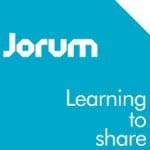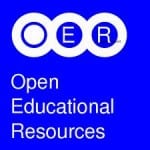This page includes the following ‘Frequently Asked Questions’ about OER raised during team meetings.
- Where can I find examples of OER at Lincoln?
- What is the difference between Open Source Software (OSS) and Open Educational Resources (OER)?
- How are OER identified?
- What is Creative Commons?
- How do I find OER?
- What are OER?
Where can I find examples of OER at Lincoln?
| Chemistry FM educational resources used in Year 1 ‘Introductory Chemistry for Forensic Science’ (30 credits) including video and radio programmes broadcast on Siren FM. The Chemistry FM Project blog is here http://chemistryfm.blogs.lincoln.ac.uk/ and content can be accessed here https://eprints.lincoln.ac.uk/2366/ |
| Pencils and Pixels a sets of learning resource videos aimed at improving communication skills through drawing. The project blog is here http://pencilsandpixels.blogs.lincoln.ac.uk/ and content can be accessed here http://eprints.lincoln.ac.uk/1975/ |
What is the difference between Open Source Software (OSS) and Open Educational Resources (OER)?
Open Educational Resources (OER) describe learning content which can be reused and Open Source Software (OSS) describes software source code which is made available to developers to adapt and customise. Examples of Open Source programs are Mahara and WordPress.
How are OER identified?
OER will have a Creative Commons licence logo attached which will look something like this.
![]() Content on this site is licensed under a Creative Commons Attribution 3.0 License
Content on this site is licensed under a Creative Commons Attribution 3.0 License
See Creative Commons below for more information about different types of creative commons licences which can be attached to OER.
What is Creative Commons?
Creative Commons is a collection of digital content which can be copied, distributed, edited, remixed, and built upon, all within the boundaries of copyright law. Creators maintain ownership of their content but licence it for use by the wider community. Creative Commons copyright licences challenge the traditional restrictions of copyright, which existed before the Internet, and runs contrary to the intended free and open nature of content on the World Wide Web. There are multiple instance of Creative Commons licences; the most common is Attribution Share which lets others distribute, remix, tweak, and build upon work, even commercially, as long as the author is credited for the original creation.
Further details of the different Creative Commons licences are available at the Creative Commons website here http://creativecommons.org/licenses
How do I find OER?
OER reside in collections or repositories and examples of useful starting points are listed below.
The Jorum repository contains OER from teaching staff from UK Further and Higher Education Institutions JorumOPENrepository
| HumBox at http://humbox.ac.uk/ is a repository for storing, managing and publishing Humanities teaching resources on the web. |
| SWAPbox at http://www.swapbox.ac.uk/ is a repository for storing, managing and publishing social policy and social work teaching resources on the web. |
The OER wiki hosts a list of repositories http://oerwiki.iiep.unesco.org/index.php/OER_useful_resources/Repositories
JISC Digital Media http://www.jiscdigitalmedia.ac.uk contains guidance on finding video, audio and images online, including those licensed as Creative Commons
Open Learn at http://openlearn.open.ac.uk offers over 600 free online courses from The Open University all made available under a Creative Commons Attribution-NonCommercial-ShareAlike 2.0 Licence
The JISC OER Infokit includes a list of seach engines for repositories on https://openeducationalresources.pbworks.com/w/page/27045418/Finding%20OERs
What are OER?
OER are digital materials designed to support the acquisition of knowledge, which the author has released the material into the public domain with a Creative Commons licence attached that grants permission for free reuse and repurposing.
A number of definitions of OER are commonly used:
- OER are digitised materials offered freely and openly for educators, students and self-learners to use and reuse for teaching, learning and research. (Jan Hylén, Giving Knowledge for Free: The Emergence of Open Educational Resources, 2007)
- OER are teaching, learning, and research resources that reside in the public domain or have been released under an intellectual property license that permits their free use or re-purposing by others. Open educational resources include full courses, course materials, modules, textbooks, streaming videos, tests, software, and any other tools, materials, or techniques used to support access to knowledge.
(William and Flora Hewlett Foundation, A Review of the Open Educational Resources (OER) Movement: Achievements, Challenges, and New Opportunities, 2007) - Open Educational Resources (OER) are teaching and learning materials that you may freely use and reuse, without charge. OER Commons


